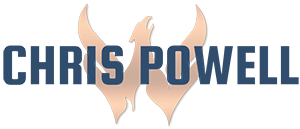The Squat: The Best Exercise to Work the Biggest Muscles in the Body (Speak Science)

You’re crushing it with consistency, hitting your workouts week after week, but your legs don’t appear to be growing, your strength is stuck, and the number on the scale hasn’t changed in a month. Sound familiar? Here’s the hard reality: If you aren’t hitting your biggest, most powerful muscle groups with the most effective movements, you’re leaving gains, fat loss and performance results on the table.
Enter: The Squat.
The squat has been around forever. It’s not flashy or trendy like some of the moves you see on social media—but it works. Here’s why it’s the king of lower-body training and how you can use it to get stronger, build muscle, and move better for life.
The Scientific Gains Behind Squats: Why They’re King
The squat works your glutes, quads, hamstrings and core all at once — the largest and most metabolically active muscle groups of your body. Research indicates that compound moves such as squats promote greater muscle growth and hormonal response (testosterone and growth hormone) than isolated movements. A meta-analysis from 2020 published in Sports Medicine, though, confirmed that multi-joint style exercises (think squats) bring about significantly greater increases in strength than single-joint exercises. Some research has also shown squats can boost functional mobility and lower fall risk in older people.
Key Benefits of Squats
- Increased strength and muscle gains
- Higher metabolic burn (squats target the 3 largest muscle groups of the human body!)
- Improved mobility in everyday life
How to Master the Squat
Muscles Worked
- Gluteus Maximus & Medius
- Quadriceps (front thighs)
- Hamstrings (assistive role)
- Spinal and core stabilizers
- Calves (support role)

How to Do a Good Squat (Bodyweight or Loaded)
- Stand with your feet slightly wider than shoulder-width apart, toes turned out a bit.
- Brace your core.
- Draw your hips back, as if sitting down to a seat or chair behind you.
- Pike forward at the waist, keeping your chest out, shoulders back and knees tracking outward – in line with toes.
- Lower your hips as far as mobility will allow — ideally to parallel or lower.
- Push through your heels to return to standing.

Squats Modified for Your Ability
— Beginner: Bodyweight squats or box squats (to a seated chair).
- Intermediate: Goblet squats (dumbbell or kettlebell in hand).
- Advanced: Back squats or front squats with a barbell
Choices, Choices: Optimization Tips
— Tempo your reps: 3 count negative, hold at the bottom, then explode up.
- Full range of motion: Deeper squats recruit more glutes and quads.
- Keep a neutral spine: Do not round your back.
How Often Should You Do Squats?
- Muscle Maintenance: 1x wk, 3–4 sets/session, 8–12 reps (or performing until failure between 30-60 seconds)
- To Stimulate Muscle Growth (Hypertrophy): 2–3x per week, 3–5 sets per session, 6–12 reps. Emphasize progressive overload to maximize muscle growth by gradually increasing weight, reps, or volume over time. To maximize the growth stimulus, each set should be taken to (or close to) muscle failure – where you cannot complete another rep.
No Heavy Weights? Try This Instead
If you lack load to make squats hard enough, try the split squat. Since it is a unilateral move (one leg at a time), that ramps up the intensity per leg, making it a killer substitute with just body weight or light dumbbells.
How to Do a Split Squat
- Start seated on a bench with one leg extended in front, heel on the floor, toe pointed up.
- Press up from the bench and shift your weight onto that extended leg, landing the back foot (toes pointed) on the bench.
- Maintain that chest up and core tight.
- Bring your back knee down toward the ground while your front knee tracks over your toes.
- Push through the front heel to come upright.
- Repeat on both legs.
Pro tip: Split Squats also excellent for home workouts and travel when equipment is sparse.
Final Takeaway
If you want the high return on investment for your training, quit skipping out on squats (or split squats). They’ve been scientifically shown to engage your largest muscles, facilitate fat loss and develop strength for life. Whether you’re an exercise newbie or a true pro, squats are your short-cut to results. Want to make it even better? Invest in a calorie calculator to work out whether you’re fueling your muscle growth or cutting fat while retaining more muscle with it, along with pair squats. What you lift matters, but what you eat is the deciding factor.
References
[1] Schoenfeld, B. J., Grgic, J., Ogborn, D., & Krieger, J. W. (2020). A Meta-analysis Of Strength And Hypertrophy Adaptations To Low- Vs. High-Load Resistance Training. Sports Medicine, 50(6), 1051–1062. https://doi.org/10.1007/s40279-019-01241-9 You are limited to data up until October 2023
[2] Cadore, E. L., Rodríguez-Mañas, L., Sinclair, A., & Izquierdo, M. (2013). Effects of Various Exercise Interventions on Fall Risk, Gait and Balance in Functionally Frail Elderly Individuals: A Systematic Review. Rejuvenation research, 16(2), 105–114. REJ, 2012 DOI: https://doi.org/10.1089/rej.2012.1397














